The fashion e-commerce industry is always proud of changing the way a model wears Prada. Change is at the center of the fashion industry. Because of this reason, there are seasonal fashion shows every year. However, this has not been the case for this year because of the pandemic outbreak. Many fashion enthusiasts and people who work in the industry are saying that 2021 is the year that the industry experiences the most drastic transformation.
As the world is trying to navigate the aftermath of the pandemic, there are new practices that the industry is ready to try on. Many fashion experts are investing in sustainable apparel and ecommerce since the global fashion industry is changing drastically. The fashion industry is replacing the usual glossy events with seasonal products where consumers buy products that satisfy them fully with every purchase.
As a store owner, you need to establish yourself as an effective e-commerce store. Many stores do not have working formulas. Owning a fashion store during the age of the internet is crucial and tricky at the same time since many products online require you to be proactive. The idea is to make your products available by having a seamless delivery system. Some of the ways that fashion eCommerce stores make their customer experience worth it is by learning the customers’ behaviors and language. You can also use social media to market your service and products. Many people are connected through social media and they make purchases from referrals and well-curated social media pages.
Through ecommerce fashion industry statistics, the trend shows that 2021 will be a successful year for the people who embrace technology and recent fashion trends. If you are looking to improve the e-commerce experience for your customers, here are some fashion trends worth trying out in 2021.
FACTS: 24% of marketers use paid advertising to impact direct sales. In fact, 68% of marketing leaders use guided selling technology or tools. (HubSpot)
Join the Recommerce online apparel industry.
Recommerce is also known as reverse commerce. This is the process of reselling, renting, or thrifting apparel that has previously been owned through an online or offline store. Many customers are looking for unique pieces of apparel at a cheap price. For them to get these items, they buy previously owned apparel instead of brand new ones.
As the fashion world is navigating the post-pandemic period, enthusiasts are looking for sustainable models that force brands to be accountable. The resale aspect of fashion e-commerce is experiencing a new beginning. There is a constant growth rate since 2019 where the resale industry was estimated to be worth around $7 billion. E-commerce fashion industry statistics show that the industry will grow to over $36 billion by 2024. This is an annual growth of 39% per annum. The resale e-commerce market has a new lease of life as it tries to remain sustainably affordable while still keeping up with market trends.
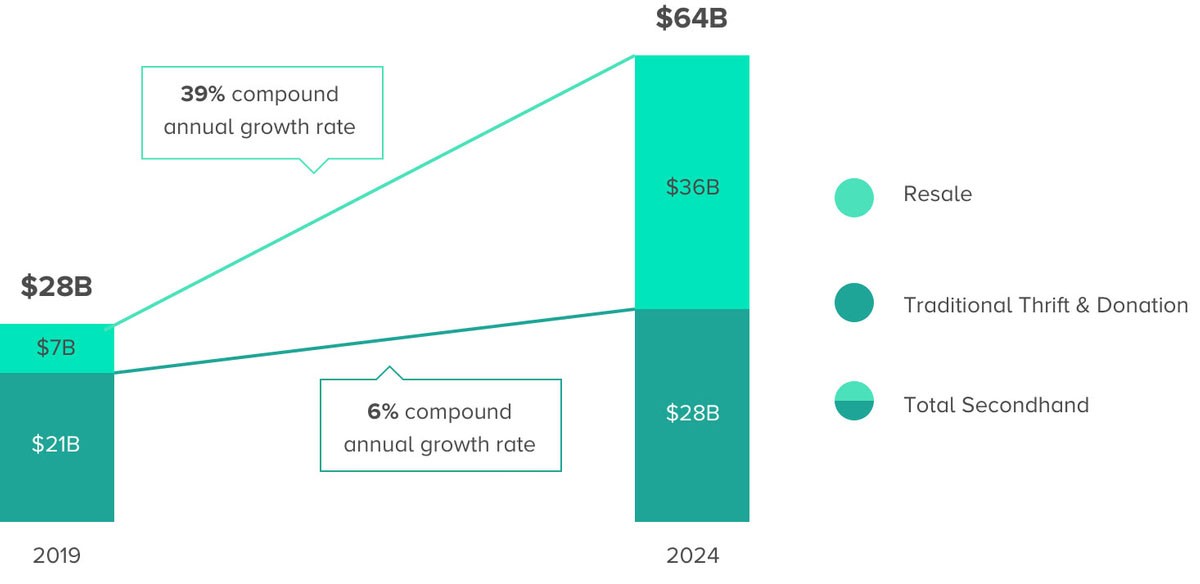
(Image Credit: thredUP)
During the postCrete recession-era between 2008 and 2016, the resale revenue increased by more than 45%. Because of this increase, department store sales reduced by 25%. This showed that history is repeating itself. By 2019, the fashion e commerce statistics stipulated that the resale fashion industry was growing 25% faster than the normal retail sector. Through a statistical report by First Research, over 20,000 resale merchandise stores were generating close to $17 billion in annual sales. The online fashion retail market size is on an upwards trend because of recommerce.
The resale fashion stores were estimated to grow by over 60% between 2018 and 2021. This was even before people started shopping for cheaper apparel from home during quarantine and lockdowns. The ecommerce apparel market size is growing with people who embrace thrifting and resale. The recommerce industry in fashion started back in 2009 with stores like Vestiaire, Thredup, and Tradesy launching their brands. The luxury brand ‘The RealReal’ noticed a growing trend in the resale market and launched its store in 2011. Then, the social media-based store Depop came in and grew a niche through easier accessibility. The ecommerce apparel market size has been growing since then with more and more stores embracing recommerce.
Thredup is the leading fashion e-commerce resale store and it welcomes 7 million visitors on its site per month. RealReal also has a great following with over 6 million online visitors.
The pandemic has shifted people’s mindset in thrifting by making them choose easier ways of shopping to reduce exposure to the virus. People are thrifting these pieces because they have cut their shipping budgets by more than 50%. The resale percentage is just going to increase even more in the next five years:
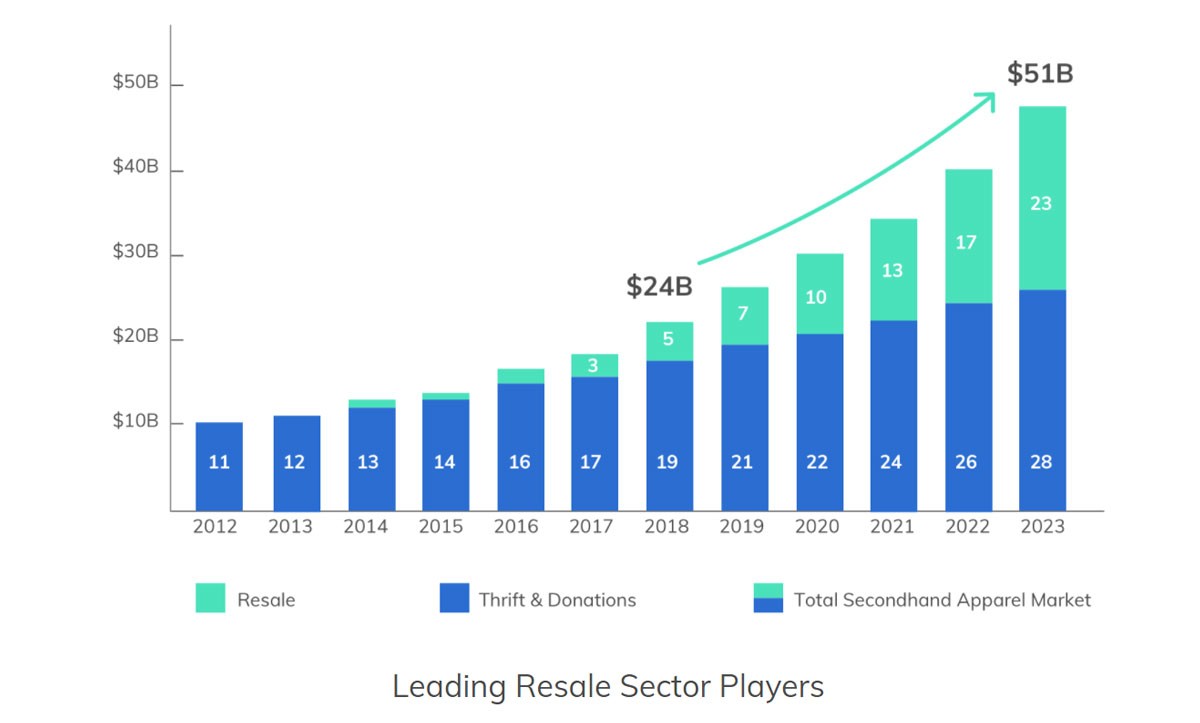
(Image Credit: thredUP)
Test your SEO in 60 seconds!
Diib is one of the best SEO tools in the world. Diib uses the power of big data to help you quickly and easily increase your traffic and rankings. We’ll even let you know if you already deserve to rank higher for certain keywords.
- Easy-to-use automated SEO tool
- Keyword and backlink monitoring + ideas
- Speed, security, + Core Vitals tracking
- Intelligently suggests ideas to improve SEO
- Over 500,000k global members
- Built-in benchmarking and competitor analysis
Used by over 500k companies and organizations:
Syncs with 
Thredup shares the sub-trends of successful recommerce.
- Quality: Luxury brands like Gucci and Louis Vuitton are seen as investable because of their high quality
- Nostalgia: Many stores are incorporating their throwback styles into their new pieces of fashion. Nike is an example of the Air max shoes.
- Sustainability: Brands that remain authentic and ethical in their practices continue to generate more revenue.
If you believe, as a store owner, that your website can sell thrift fashion items, then you need to consider a few things to grow your business. You should think of the fashion pieces that your clients are into and get a reliable source. You can even get cashback or a reward system if customers have these items and they would want to sell them to your store. A reliable website is something that every aspiring startup in fashion should have. You should also consider the cost of refurbishing the fashion pieces before stocking and loading them to your website.
You Might Also Like
Ethical and sustainable is the new Gold Standard.
Over the years, the fashion industry has been criticized for its adverse effects on the environment. The industry is viewed as one of the businesses in the world that leads to the most environmental degradation. It costs the environment around 70lbs of carbon dioxide to make one pair of jeans. Over 600 gallons of water are used to produce one shirt. The fashion e commerce statistics predicted that over 250million lbs of waste was the result of buying and destroying one-off use outfits in 2019. However, there has been an emerging trend where customers are aware of what they are buying. Ethical fashion practices have taken center stage. Using the renowned fashion search engine, Lyst, there has been an increase in searches that include sustainable related keywords. An annual increase of 75% yearly in keywords that promote ethical and sustainable fashion practices has been seen.
Lyst attributes this increase to the fact that brands are busy launching sustainable products and ethical fashion practices. Many brands are paying attention to being transparent in the materials they use to make their fashion pieces. They are also reinvesting in recommerce since it is a lucrative way of making recycling look good and sustainable. The search engine data is reflected at an individual level. Brands like Girlfriend Collective leggings that produce their items using recycled plastic bottles saw an increase in revenue and online searches. Bassike and Nudie jeans were also popular because they advocate for organic cotton that made them have over 50% in fashion search engine searches.
The increase in sustainability shopping is due to the fact that customers want to shop from brands that share common beliefs and ethics that do not stretch the environment. They believe in human rights and the power of the natural world reconstructing itself. For example, Boohoo saw over $1.3 billion reduced from its share price after a human rights scandal. The scandal involved a scenario where they paid their workers a lower wage than the national wage without adhering to Covid-19 social distancing rules. Companies like ASOS, VERY, and ZOLANDO all stopped selling Boohoo items while customers protested through social media.
On the other hand, Patagonia has seen constant growth because of its transparency policy. The firm shows where the raw materials are from and recyclable fabrics. Their workers earn above the national wage with additional benefits. Prada got a $57 million deal to help them grow their sustainability program and their eco-friendly practices. They use a new material called re-nylon that has increased their searches on Lyst by more than 100%. Versace, Gucci, and Armani have all stopped using fur in their products to look for more sustainable and ethical solutions. As big fashion brands begin incorporating ethics into their normal business practices, we are having an emerging new customer known as the conscious consumer.

This consumer knows 3 things.
- The cost on the environment of producing a product.
- The resale value of the product with time
- The human cost in the production of fashion pieces.
For you to survive in the online apparel industry in 2021, you must be aware of this consumer who is ready to shop at any store that is mindful of the people and the environment. The e-commerce market size is going towards sustainable and ethical practices.
Athleisure becomes a mainstream luxury.
According to fashion eCommerce statistics from the NPD group, Athleisure is going to lead the shoe sales in the American market in 2021. Athleisure has seen an annual growth of 7% for the last couple of years. Lyst’s latest report luxury sportswear and Streetwear have been evolving their definition in the recent past. Searches for athleisure and Streetwear have been increasing. These trends have seen customers spending over $190 on a pair of sneakers. This is a 38% increase per year. The purchasing power has increased. According to Mart Powell, a senior advisor at NPD, many customers are looking for shoes that are more versatile and less technical. People desire shoes that can be worn daily.
The versatility theme shows it’s not only shoes that are growing with the athleisure trend. Clothes and apparel have been growing and the global athleisure online fashion retail market size has increased by 9% in 2020. The market is expected to double in growth rate in 2021. Customers are inclined to athleisure because of comfort. This has been noted especially with people working from home who want to be comfortable. Data from the RBC market survey in the US shows that 70% of sporting product consumers use them for athleisure while the remaining 30% use them for sporting activities. Using ecommerce fashion industry statistics, most people purchase athleisure products as fashion statements.
With the increase in the need for athleisure products, companies like Nike and Lululemon have seen an increase in sales by over 130% in the last couple of years. There have been many product rollouts since the athleisure trend started a few years back. Athleisure products are categorized as luxury products and since then, companies like Target and Amazon have launched their athleisure line. The image below shows a few examples of athleisure products:
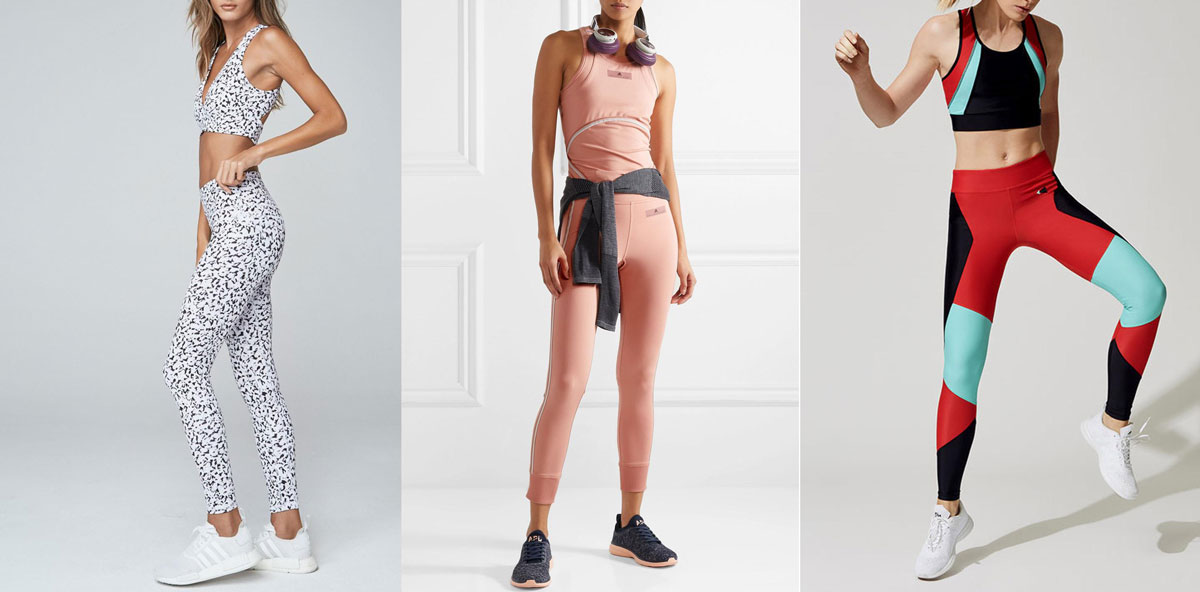
(Image Credit: Furthermore from Equinox)
Influencers on Athleisure Products
Many companies have partnered with influential people to lead a campaign where they show the comfort that athleisure products bring to clients. The most notable one is Beyoncé’s partnership with Adidas to produce the Ivy Park. Ivy Park is an athleisure line that has been growing exponentially. The campaign saw Beyoncé sending celebrities and influential people a few items from the athleisure line and them sharing the products on social media. The products sold out as soon as they went public. Other notable athleisure campaigns from brands like Under Armor, Fendi, and Lululemon have seen the industry grow to a $1billion industry.
Influential people like Rita Ora and Rihanna have worked with notable brands that are investing in athleisure.
For such a fashion industry e commerce store you need to consider stocking unique athleisure products on your store and running a campaign that helps you grow your brand. Good quality athleisure products increase your chances of growing your business. Ask your customers for feedback and product reviews so that you can easily learn about new products you need to stock. You can use emails like this to ask for feedback:
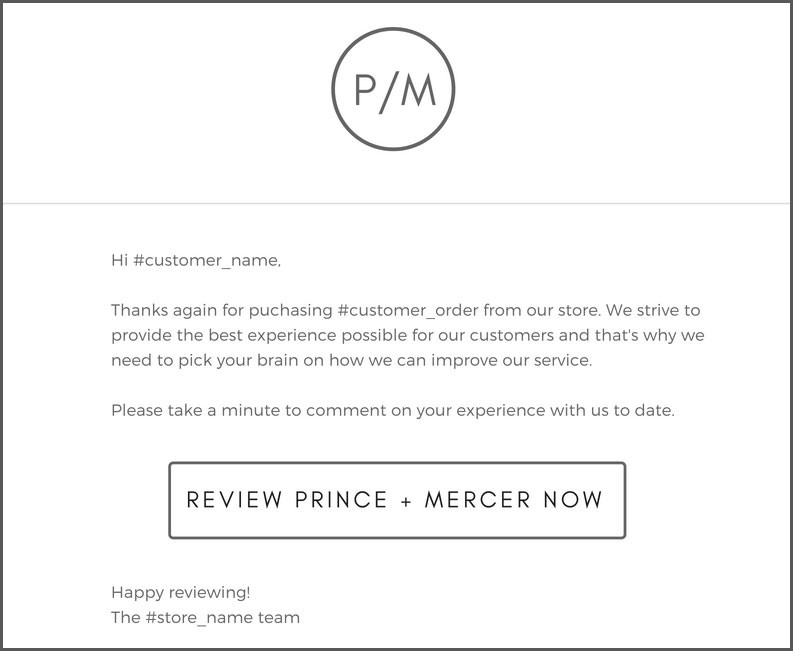
(Image Credit: xSellco)
We hope that you found this article useful.
If you want to know more interesting about your site health, get personal recommendations and alerts, scan your website by Diib. It only takes 60 seconds.
The longevity of fashion pieces.
Many fashion industry ecommerce houses are moving towards seasonless apparel. According to Gucci’s Allesandro Michelle, the normal season collections are now stale and obvious. Saint Laurent is also boarding this ship with their new collections being more durable in the market rather than being seasonal. The brand creative directors are working towards producing quality collections that will last in the market for a long time.
Vogue, through an anonymous associate, said that the covid-19 pandemic allowed fashion houses to rethink their strategies. Taking control of their schedules seems like an advisable way to grow their revenue. The idea resonates with the mind of the consumer who wants to keep an item in the wardrobe for a long time.
In 2019 fashion events, boots were being promoted as a spring collection. For the winter shows, trench style and sleeveless coats were the preference over heavy woolen outerwear. For Giambattista Valli’s fall collection, floral colors and pastel pinks were pushed. These products are traditionally for the spring collection.
The reasons given for these turn of events in seasonless collections included new business models for fashion brands. They moved to a “SeeNow- BuyNow” model. The idea is to restructure the delivery schedules by allowing consumers to buy pieces right at the runway instead of waiting for the appropriate season. Another reason is the unpredictable weather patterns and climate changes. The seasons are unpredictable for the most part and the fashion designers might incur losses if they depend on traditional season patterns.
Slow Fashion Trend
There has also emerged the new slow fashion trend. This is when fashionable pieces can be styled for different times of the year and repeated in different years. They make it easier for fashion designers to make pieces that can last longer in the market. The good news is if you are a store that stocked versatile seasonal products, then you are in a good place because consumers are looking to buy cross-functional fashionable items that they can wear in different seasons.
Install AR and VR fitting rooms.
The world is at an advanced digital stage where many retailers are looking to retain current customers while attracting new customers using virtual reality (VR) and augmented reality (AR) experiences. In a Gartner study done in 2018, over 40% of fashion retailers are looking to install AR and VR solutions to improve customer experience. The dressing rooms are one of the areas you can tap into to grow customer service. Customers can fit clothes without going to the store physically. For example:
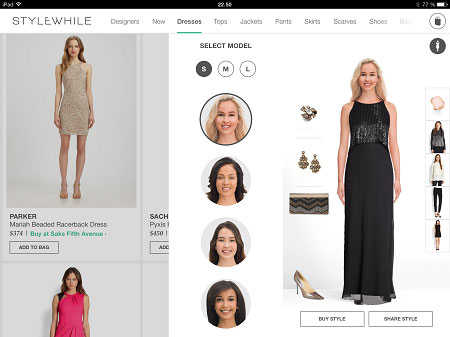
(Image Credit: Paperblog)
For example, Rhone Apparel patterned with Rakuten to create a virtual try-on service dubbed ‘Rakuten fits me.’ The service made consumers who did not know how specific products would fit them to purchase more. They would answer a few questions and the right fit of the product would be presented from different angles. Through a service called Fit origin, recommendations would be issued.
The conversion rate of those who used the service increases by 9.8% than that of those who shopped traditionally. Over the recent past, the ‘Rakuten fit me’ conversions have been tripling. They have had new customers coming to view the product and end up purchasing new products.
ASOS launched their augmented reality service where clients could see models at the comfort of their home. Models in new pieces clients’ desire made them aware of new collections. Zara also has an app supporting augmented reality. Customers are lured to buy products because they receive real-life experiences virtually. Clients now can view the products and try them on from their houses without coming in contact with people.
As a fashion eCommerce store owner, you need to invest in the comfort of your clients. You have an upper hand over any other retailer if you can provide VR and AR services to your clients. You help them reduce the contact and human interaction in these trying times. Challenge yourself to use technology as a tool to improve the shopping experience for your clients. This way, you can grow revenue and popularity.
Diib®: Learn Your Ecommerce Market Size Today!
These are some of the ways you can grow your fashion store in the coming year. Partnering with Diib Digital offers Ecommerce marketers an added measure of comfort and information. Our comprehensive User Dashboard will give you the vital metrics necessary to make strategic business decisions. Here are some of the features that set us apart from the crowd:
- Keyword, backlink, and indexing monitoring and tracking tools
- Google Core Algorithm monitoring
- PPC monitoring and tracking
- Alerts to broken pages where you have backlinks (404 checker)
- Alerts and Objective that guide you to strengthen your website
Click here for your free 60 second site analysis and industry ranking or call 800-303-3510 to speak with one of our Growth Experts.
FAQ’s
In the United States, the apparel market is valued at around 368 Billion dollars. This is only increasing with the current pandemic climate.
Online apparel sales accounted for just under 40% of total US apparel sales.
The average conversion rate for ecommerce landing pages was 2.35%, however, the top 25% of those are converting at 5.31%. Ideally, you want to break into the top 10% — these are the landing pages with conversion rates of 11.45% or higher.
SEO is vital for Ecommerce websites. In order for people to see the products you sell and to rank above your competitors SEO is a must. Finding the right keywords is also critical for ecommerce success.
This depends largely on the scope of your campaign and the industry you’re in. Most SEO projects cost between $1000-$2000/month. A one-off project will range between $5,000-$10,000+ and hourly rates for SEO consultants costs between $80-$200/hour.



